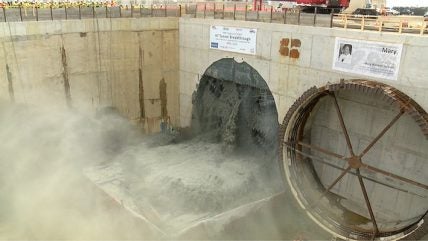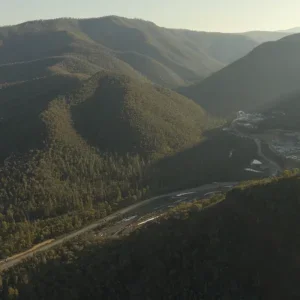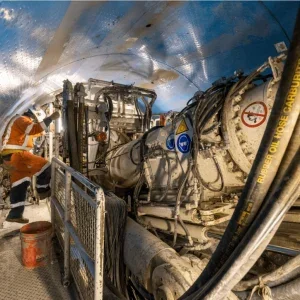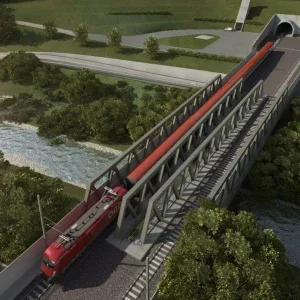
TBM Mary arrived at the North Island reception pit and will now be repositioned for the return trip. It will take up to six months to turn her around and position her for relaunch. She will then build a parallel tunnel back to the South Island.
The variable density TBM, designed for the soft soils of the Hampton Roads region in Virginia, has a diameter of 14m and is 131m long.
The TBM launched from the South Island (Norfolk side) in April last year. Mary excavated 2.4km, dug out around 685,800m3 of soil, and installed 1,191 concrete rings. The biggest advance in a day was 34.4m, with 17 rings installed.
The US$3.9bn (£3.13bn) HRBT Expansion is the largest highway construction project in Virginia’s history. It involves widening the current four-lane sections along nearly 16km of the I-64 corridor in Norfolk and Hampton, with new twin tunnels across the harbour.
The new tunnel is approximately 15m deeper than the existing tunnels, with its deepest point 52.8m below the water surface. All other tunnels in Hampton Roads are immersed tubes.
In addition to being Virginia’s first bored road tunnel, it is only the third in the US.
“The Hampton Roads Bridge-Tunnel made history in 1957 as the world’s first tunnel constructed between two man-made islands,” said Virginia Department of Transportation (VDOT) commissioner Stephen Brich. “Today, the HRBT makes history again as Virginia’s first bored tunnel. With the breakout of the TBM, we are one step closer to the completion of this transformative project that will increase capacity at one of the region’s most congested corridors.”
TBM Mary was named after NASA engineer Mary Winston Jackson.







